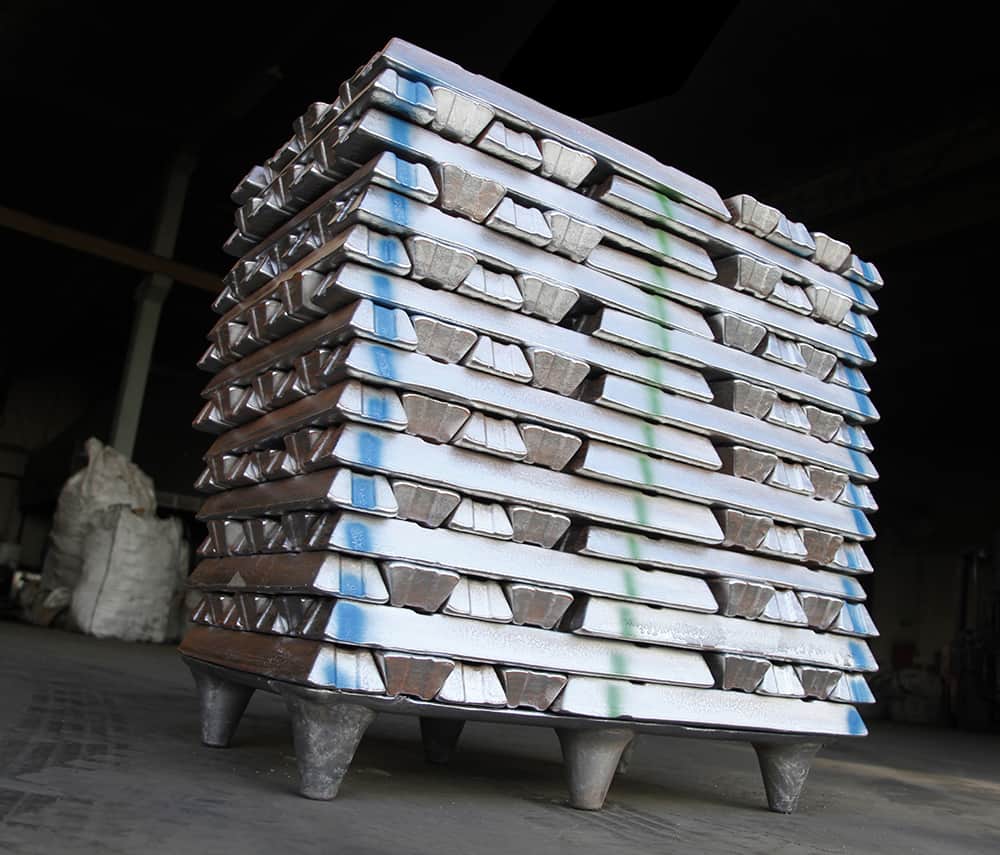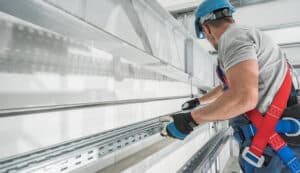
In the ever-evolving landscape of sustainable construction, aluminum is a cornerstone. Revered as the “green metal,” this material is enabling a significant shift in building practices. Globally, architects, engineers, and builders are turning to aluminum for its unique blend of qualities that promise not only to revolutionize design and construction methods but also to significantly contribute to environmental sustainability.
This transition to aluminum is not a mere trend; it’s a response to the growing imperative for sustainability in the construction sector. Aluminum stands out for its exceptional strength-to-weight ratio, a property that has become increasingly valuable in modern architecture, especially in the design of skyscrapers and complex structures. This feature not only facilitates innovative design but also reduces the overall load on building foundations, contributing to more sustainable construction techniques.
The technical attributes of aluminum extend beyond its lightweight nature. Its resistance to corrosion and superior thermal properties make it an ideal choice for building exteriors and climate control systems. Furthermore, aluminum’s malleability lends itself to creative architectural expressions, allowing designers to push the boundaries of conventional construction.
However, it is the environmental aspect of aluminum that places it at the center of sustainable construction. The metal’s ability to be recycled repeatedly without losing its quality is a cornerstone of the circular economy, a key factor in reducing the environmental impact of construction materials. This recyclability, combined with its long lifespan, positions aluminum as a material that not only meets current building requirements but also aligns with future sustainability goals.
The industry’s pivot towards aluminum is increasingly evident in green building certifications like LEED, where its use contributes significantly to achieving higher sustainability ratings. As environmental considerations become as crucial as structural integrity in building materials, aluminum is proving to be more than just an alternative; it’s becoming an essential component of environmentally responsible construction practices.
As we witness this shift, the role of aluminum in sustainable construction is not just advantageous but imperative. The material’s properties align with the global drive towards reducing environmental footprints in the construction industry. Aluminum, therefore, is not just a participant in the current wave of sustainable construction; it is a cornerstone in building a more responsible and efficient approach to construction.
The Rise of Aluminum in Construction
 From the towering spires of the Burj Khalifa to the iconic dome of the San Gioacchino Church in Rome, aluminum has been a staple in construction for over a century. In fact, about 25% of the aluminum produced worldwide is used in the construction industry. This versatile material, known for its durability, corrosion resistance, and recyclability, is increasingly preferred for green building projects, earning it the moniker, “the green metal.”
From the towering spires of the Burj Khalifa to the iconic dome of the San Gioacchino Church in Rome, aluminum has been a staple in construction for over a century. In fact, about 25% of the aluminum produced worldwide is used in the construction industry. This versatile material, known for its durability, corrosion resistance, and recyclability, is increasingly preferred for green building projects, earning it the moniker, “the green metal.”
Aluminum: The Sustainable Choice
When it comes to sustainability, aluminum checks all the boxes. Its longevity, coupled with its ability to be infinitely recyclable without losing quality, makes it a highly valuable sustainable construction material. Consider this: 75% of all aluminum ever produced is still in use today. This is a testament to the material’s durability and the industry’s commitment to a circular economy.
Key Advantages of Aluminum in Construction
- Lightweight yet Strong: Aluminum weighs only a third of steel, making it a top choice for high-rise and skyscraper construction due to its high strength-to-weight ratio.
- Durability: Known for its resilience, aluminum is resistant to water, corrosion, and is immune to the harmful effects of UV rays. Furthermore, unlike other metals that can become brittle in freezing temperatures, aluminum actually improves its tensile strength as temperatures drop.
- Reflectivity: Aluminum’s heat-reflective properties make it an excellent choice for roofing and siding, helping buildings stay cooler during warmer months and reducing electricity costs.
- Non-Toxic and Recyclable: Aluminum is inherently non-toxic and fully recyclable, promoting the circular economy and reducing waste.
- Cost-Effective: Given its low maintenance requirements and long lifespan, aluminum proves to be a highly economical building material.
The Role of Aluminum in Green Building Certifications
Aluminum’s integration into building projects garners notable recognition under LEED (Leadership in Energy and Environmental Design) standards, a globally acknowledged benchmark for green building. This certification program, spearheaded by the U.S. Green Building Council, evaluates the environmental performance of buildings through various metrics, where aluminum plays a crucial role.
The use of aluminum contributes significantly to a building’s LEED score in several categories. In the Materials and Resources category, aluminum’s high recyclability rate and its contribution to a building’s overall recycled content are key factors. Buildings utilizing aluminum can earn points for incorporating materials with recycled content, thereby promoting the circular economy and reducing the environmental impact associated with new material production.
In the Energy and Atmosphere category, aluminum’s role in enhancing a building’s energy efficiency is paramount. Its reflective properties, particularly in roofing and siding applications, contribute to reduced heat absorption, thereby decreasing the need for air conditioning and leading to lower energy consumption. This aspect of aluminum is increasingly relevant in the context of global efforts to reduce energy usage in buildings.
Furthermore, in the Innovation category, aluminum’s unique properties, such as its lightweight nature and durability, allow for innovative design solutions that can earn additional LEED points. This encourages architects and engineers to think creatively in utilizing aluminum to maximize a building’s environmental and energy performance.
Aluminum in Action: Real-World Applications
The practical applications of aluminum in construction are evident in some of the world’s most iconic structures, each exemplifying the metal’s versatility and durability. The Richmond-San Rafael Bridge in California is a testament to aluminum’s resilience. This structure utilizes aluminum extensively in its construction, showcasing the metal’s ability to withstand the corrosive marine environment while maintaining structural integrity.
The Burj Khalifa in Dubai, standing as the world’s tallest building, demonstrates aluminum’s role in modern architectural marvels. The tower’s exterior cladding, composed of lightweight aluminum and glass, contributes to the building’s overall energy efficiency and aesthetic appeal, while handling the extreme temperatures of its desert location.
In Japan, the Tokyo Skytree, the tallest tower in the world, utilizes aluminum in its structural components and facade. The material’s strength and lightweight properties were crucial in the tower’s design, allowing it to withstand seismic forces, a critical consideration in earthquake-prone Japan.
The O2 Arena in London is another example where aluminum’s flexibility and durability are on full display. The arena’s roofing system, made from aluminum, not only provides an iconic visual element but also offers a long-lasting, maintenance-free solution, essential for such a high-traffic public venue.
These structures, each unique in their requirements and challenges, highlight how aluminum’s attributes can be leveraged in diverse ways, from withstanding environmental stresses to enabling groundbreaking architectural designs. The real-world applications of aluminum in these projects underscore its growing importance in the construction industry and its potential to shape the future of sustainable building practices.
The Future of Aluminum in Construction: 3D Printing
One of the most exciting developments in the field of aluminum construction is the rise of 3D printing. This disruptive technology promises to revolutionize the construction industry, offering unprecedented design freedom and manufacturing flexibility. With continued focus on sustainability and the circular economy, the demand for structural aluminum alloys is expected to continue to grow in the future.
American Douglas Metals: Providing Aluminum for Diverse Construction Needs
 For over four decades, American Douglas Metals (ADM) has been a leader in the metals distribution industry, specializing in aluminum products. ADM’s commitment to quality, experience, and community engagement sets them apart in the industry. Their product and service offerings, including embossed metal products, sheared metal products, aluminum extrusion products, and customized metal products, embody their dedication to delivering top-tier aluminum products.
For over four decades, American Douglas Metals (ADM) has been a leader in the metals distribution industry, specializing in aluminum products. ADM’s commitment to quality, experience, and community engagement sets them apart in the industry. Their product and service offerings, including embossed metal products, sheared metal products, aluminum extrusion products, and customized metal products, embody their dedication to delivering top-tier aluminum products.
Conclusion
As we move towards a more sustainable future, the use of aluminum in construction is no longer just an option—it’s an imperative. Its unique combination of strength, durability, and recyclability makes it an ideal choice for green building projects. As we continue to innovate and push the boundaries of what’s possible, one thing is certain: aluminum will continue to play a pivotal role in shaping our built environment.
Contact ADM today to learn more about their aluminum solutions:
- Website: www.Americandouglasmetals.com/
- Toll-Free: 1-800-432-3423
- Address: 576 Ocoee Business Parkway Suite 10, Ocoee, FL 34761
Research:
- https://iqubx.com/aluminium-a-green-building-material/
- https://www.fbsprofilati.it/sustainable-products/
- https://www.kawneer.us/aluminum-in-building-and-construction/
- https://orangealuminum.com/blog/five-advantages-of-aluminum-in-construction/
- https://www.sciencedirect.com/science/article/abs/pii/S2352012423013784
- https://www.aluminum.org/sustainability/uniquely-sustainable
- https://www.aluminum.org/building-construction
- https://www.aluminum.org/GreenBuilding
